In part one, FDMEE Tutorial: How to Utilize an HFM Application as a Source, new FDMEE functionality with release 11.1.2.4 was demonstrated. This tutorial will demonstrate the HFM source data interfaced to an Essbase application and assumes completion of part one.
This post will proceed with version 11.1.2.4 of EPM installed on Windows Server 2012 R2, the COMMA4DIM HFM application, and the Sample Basic Essbase application.
1. Log in to Workspace.

2. Navigate --> Administer --> Data Management.

3. Select the Setup tab and then Target Application.
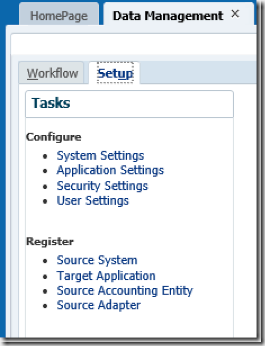
4. Select Add.
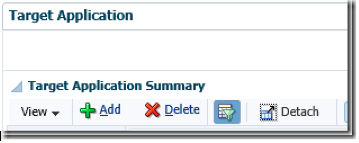
5. Select Essbase.

6. Select Sample-Basic and then OK.
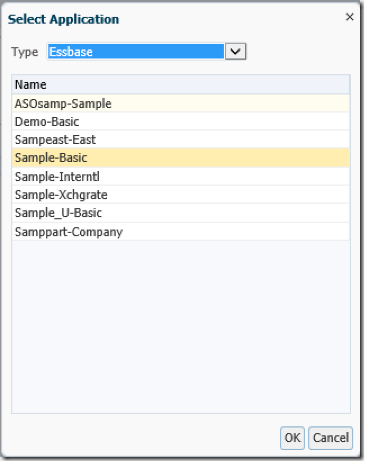
7. Select Save after the Application Details have displayed.

Starting with this step and continuing to STEP 25, the following is from Part One and can be skipped if Part One was completed.
8. Select Import Format.
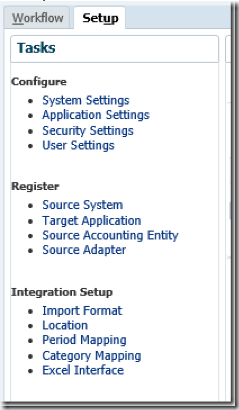
9. Select Add.

10. Select EPM as the Source that enables HFM application to be used as a Source.
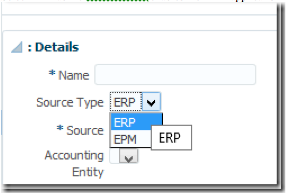
11. Update the remainder of the Import Format Details: Name, Description, and Source as COMMA4DIM and Target Type as EPM. Once this is done, select Save.

12. The COMMA4DIM mappings require an update that in this circumstance will be to map the same Source Column to the same Target. Once the mapping is complete, select Save.
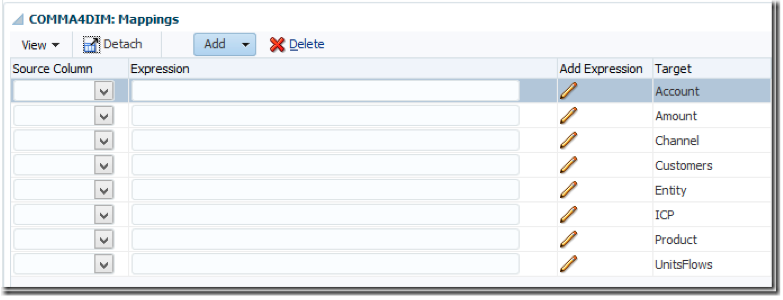
13. Select Location and then Add.

14. Update the Location Details to COMMA4DIM for Name and Import Format. The remainder of the Location Details are default and will not be changed in this example. Once the updates have occurred, select Save.
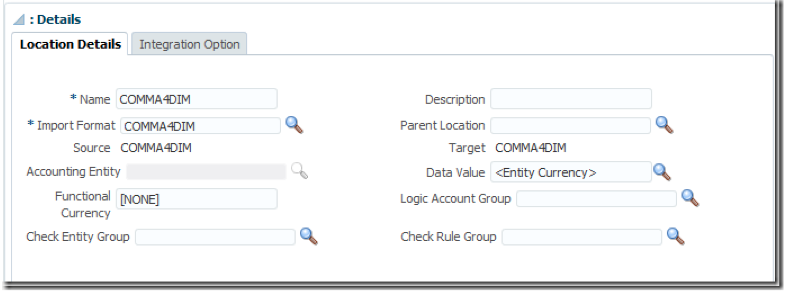
15. Select Period Mapping.
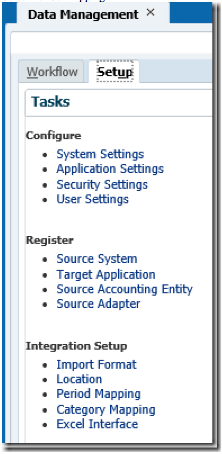
16. Create the Period Key by selecting Add and then keying the values displayed. The Target Period Month and Year Target will be utilized as the period and year filter for the data extract; therefore, the values keyed should be consistent with HFM. Select Save and proceed to the next step.

17. Select Category Mapping.
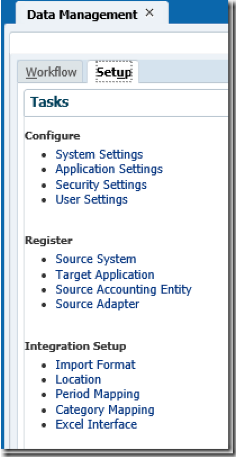
18. Key BudV1 as both the Category and Target Category with Frequency of Monthly. Select Save once this has occurred.

19. Select Workflow and then Data Load Rule. If needed, update the FDMEE POV for the Location, Period, and Category created in the previous steps.
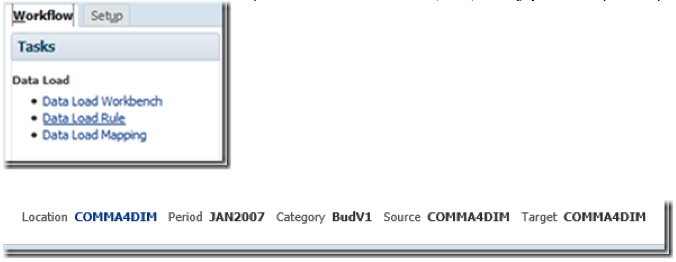
20. Select Data Load Rule and then Add.
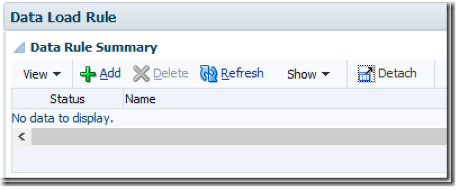
21. Name the rule COMMA4DIM, and then select Save.
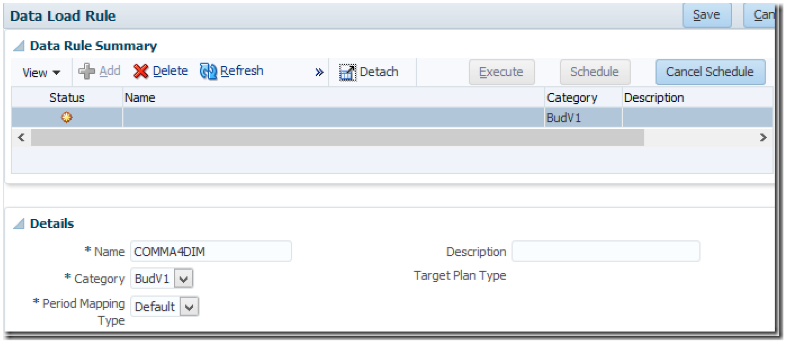
22. A Source Filter is needed for each Dimension Name that can be selected from the drop down as every HFM dimension must be specified. Filter Conditions will be specified which provide data from the extract. Note that the Year and Period dimension are not specified.
Select Add to specify a filter, and then from the Dimension Name drop down select Account then the Ellipsis.

23. Select Refresh Members and then Online for the Member List to populate. Once this is done, the Legal member will be added to Selected Members and then OK will be selected. Select members that have data; otherwise, zero records will be extracted, which will generate an error message.
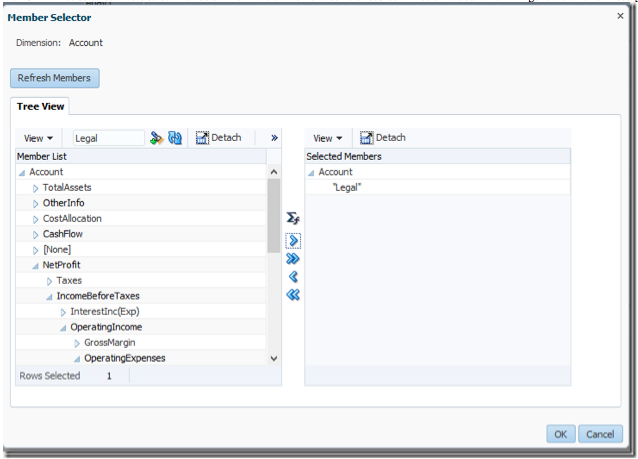
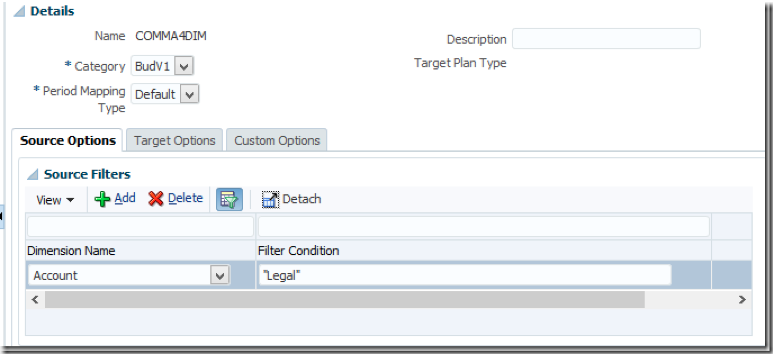
24. The process of adding a Source Filter for dimensions Channel to View is the same process as Account; therefore, only the selections will be displayed. Once all filters are specified, select Save.
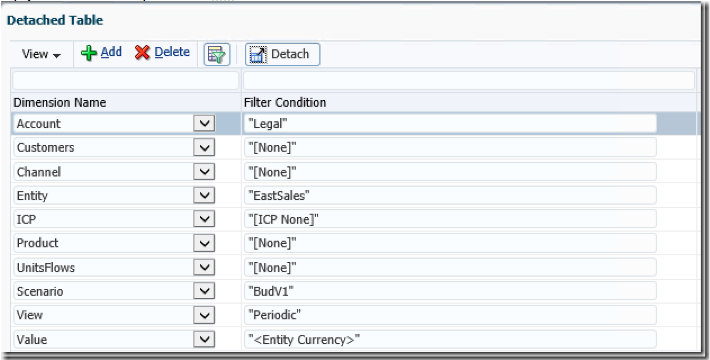
25. If a dimension is not specified or an invalid member is specified for a dimension, an error message similar to the one below will be displayed in the log accessible from Process Details. For example, this error message was generated by an invalid year, Y#200 instead of Y#2007 in the Filter Slice.


26. Select Data Load --> Data Load Map.
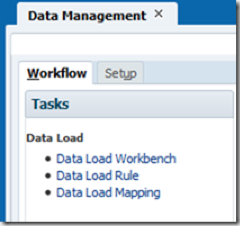
27. Each dimension requires at least one map to specify the import member(s) to the mapped member(s). In the interest of time, a one line like map will be created in this tutorial.
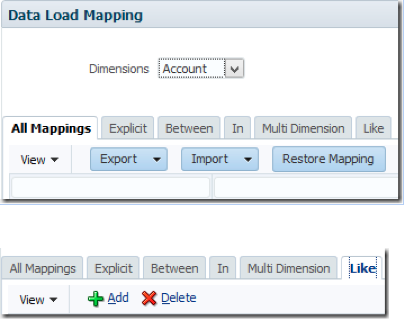
28. Key the following: Source Value of * e.g. any import member(s), Target Value of East e.g. a valid Essbase member for the Market dimension, and a Rule Name. I would recommend a naming convention for the Rule Name. For example, for Like Maps I use WC indicating a Wild Card e.g. *map and the name of the dimension. The naming convention is to assist with troubleshooting as the Rule Name is captured in the Process Details log when an error occurs.

29. Select the Dimensions drop down and choose the next dimension, which is Measures.
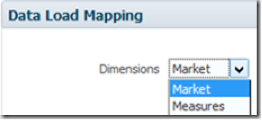
30. Select Like and then Add.

31. Duplicate the map in the image and select Save.

32. Repeat the addition of a map for the Product, Scenario, and Year dimensions, utilizing the same process as Market and Measures. The maps are displayed for each dimension.



33. Select Data Load --> Data Load Rule to return to the COMMA4DIM data load rule previously created.
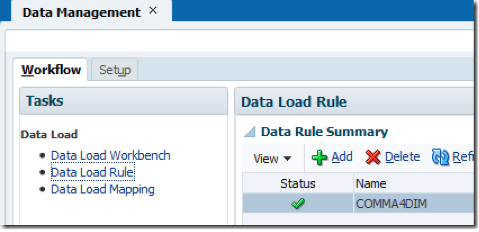
34. Select Execute.

35. When the Execute Rule dialog box displays, select the Import From Source option, which automatically selects Recalculate and Execute to Target. Once this is done, select Run. Execute Check is greyed out, as a Check Rule has not been specified and the Export Mode default of Replace is not changed. Note that the Replace Export Mode is essentially the same option as Replace when loading data with Essbase Administrative Services.
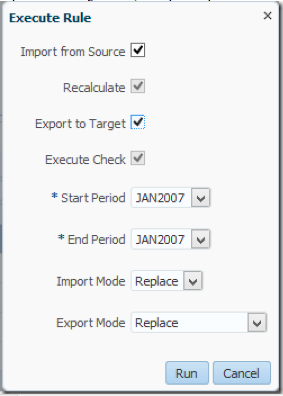
36. Click OK.

37. Select Monitor and then Process Details.
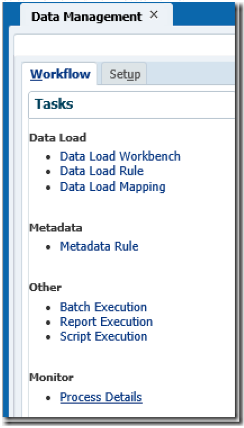
38. A successful completion is displayed for the Process ID submitted.

39. Select Data Load Workbench to view the successful submission.
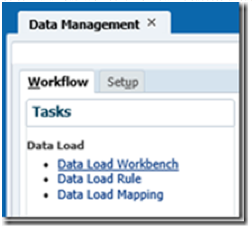

With a successful completion, this tutorial concludes.






